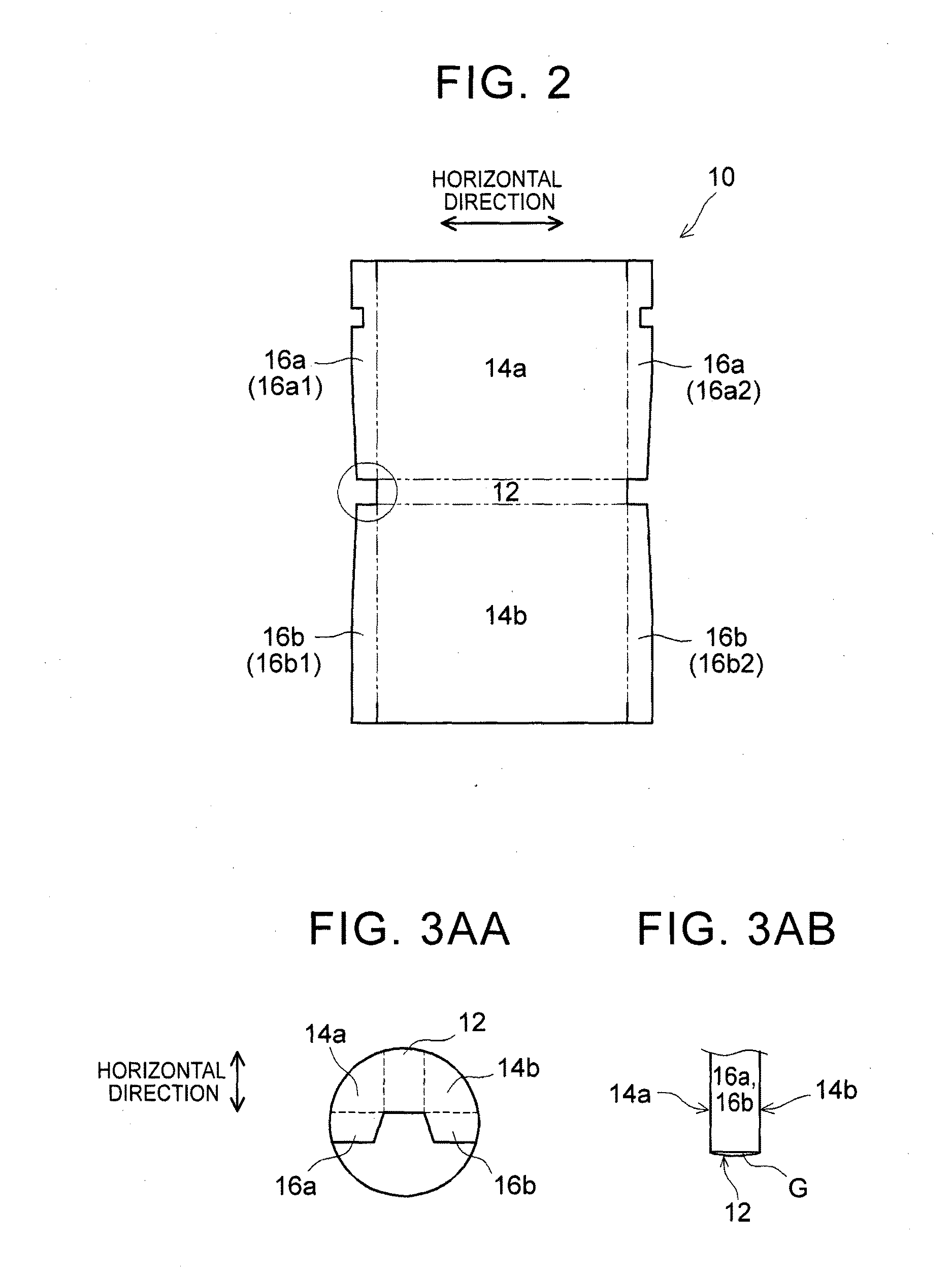Nonaqueous electrolyte secondary battery and method of manufacturing the same
- Summary
- Abstract
- Description
- Claims
- Application Information
AI Technical Summary
Benefits of technology
Problems solved by technology
Method used
Image
Examples
Example
Test Example 1
Inner Pressure of Battery
[0106]LiNi1 / 3Co1 / 3Mn1 / 3O2 (average particle size: 10 μm) as a positive electrode active material; acetylene black (AB) as a conductive material; polyvinylidene fluoride (PVdF) as a binder were weighed at a weight ratio of 90:8:2. These materials were dispersed in NMP to prepare a positive electrode paste. This paste was supplied onto both surfaces of an elongated sheet-shaped positive electrode current collector (aluminum foil) having a thickness of 15 μm such that the coating weight was 20 mg / cm2 (in terms of solid content), followed by drying. As a result, a positive electrode sheet was prepared. By rolling this positive electrode sheet, the thickness thereof was adjusted to 130 μm, and the active material layer density was adjusted to 2.8 g / cm3.
[0107]A negative electrode active material (natural graphite: C, average particle size: 5 μm); styrene-butadiene rubber (SBR) as a binder; and carboxymethyl cellulose (CMC) as a thickener were weighed...
Example
Test Example 2
Shape of Electrode Body and Electrolytic Solution Movement Blocking Mechanism
[0127]In this test example, the shape of the flat wound electrode body and the form of the insulating bag-shaped film were changed, and LiPF2(C2O4)2 having a concentration of 0.04 mol / L was added to the nonaqueous electrolytic solution. Under the same conditions as those of Test Example 1 other than the above-described conditions, nonaqueous electrolyte secondary batteries having 28 forms in total were prepared. That is, when the winding axial direction was the horizontal direction, and the long diameter direction of the elongated circle-like cross-section is the vertical direction, the width of the winding axis was adjusted such that the aspect ratio (vertical / horizontal) was changed to seven different values in a range of 0.3 to 0.8. As a result, wound electrode bodies were prepared.
[0128]In addition, insulating films having four unfolded shapes shown in FIGS. 3AA, 3BA, 3CA, and 3DA were fol...
PUM
 Login to View More
Login to View More Abstract
Description
Claims
Application Information
 Login to View More
Login to View More - R&D
- Intellectual Property
- Life Sciences
- Materials
- Tech Scout
- Unparalleled Data Quality
- Higher Quality Content
- 60% Fewer Hallucinations
Browse by: Latest US Patents, China's latest patents, Technical Efficacy Thesaurus, Application Domain, Technology Topic, Popular Technical Reports.
© 2025 PatSnap. All rights reserved.Legal|Privacy policy|Modern Slavery Act Transparency Statement|Sitemap|About US| Contact US: help@patsnap.com



